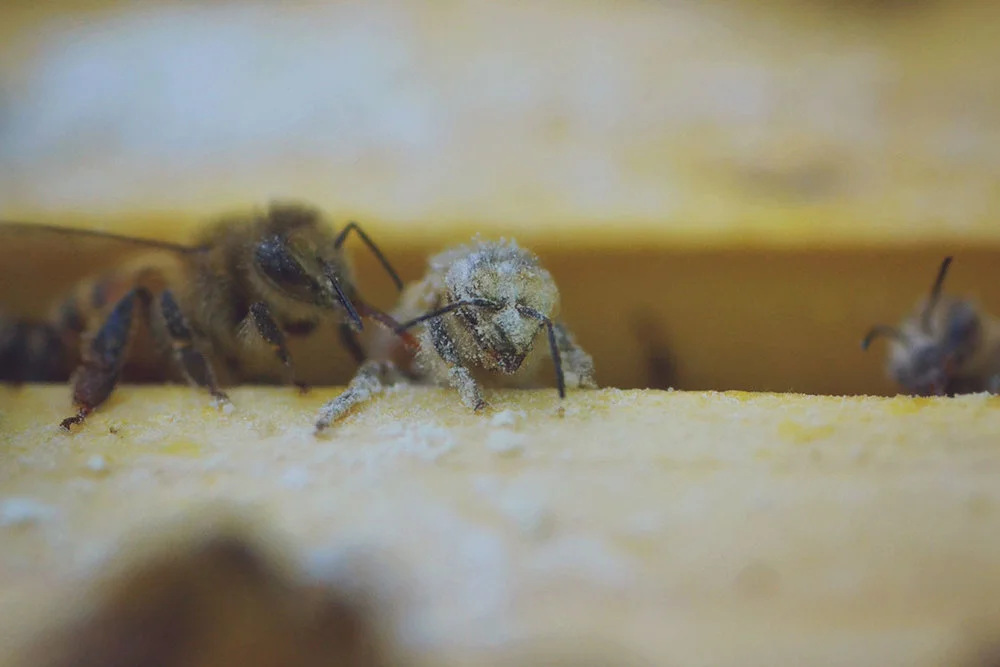Wildernest Hive Inspection: Varroa Check!

Wildernest Hive is now 6 weeks old this week and seems to be moving along as expected. Today's inspection required a Varroa Mite check!
After checking to make sure Cersei (the Queen) was alive and well (and to pinpoint her location), it was time for the Varroa check. Varroa are nasty mites that suck on the blood of honey bee larvae and can often be found on your bees. It's important to do what's called a "sugar shake" in June to get an idea of how many are already in your hive. It's normal to have some, but a high number found during your sugar shake can indicate a need for treatment.
I selected a frame that had both brood (larvae) and capped brood on it. Frames like this consist of nurse bees, who tend to the brood and are more likely to come in contact with Varroa mites.
Running a mason jar down the frame made the bees fall in, and allowed me to collect around half a cup (roughly 300 bees). Naturally, this really pissed them off and I wasn't successful without a few stings to my arm - ouch!
Once I capped the jar of bees, I put two tablespoons of powdered sugar through the grate, and started circulating the jar on its side to mix it in with the bees. The powered sugar interfere with the sticky feet on the Varroa mites, and make it so they fall off the bees.
After a couple of minutes, I shook the sugar out of the jar and into a white pail, which allows me to easily spot the red mite. A few squirts of water dissolved the sugar, and would typically reveal any mites I might have, but I'm happy to report I didn't see a single one!
I was now left with a jar of angry bees that I released back into the hive. These little ghost bees immediately started fanning their wings in an attempt to clean themselves, and their fellow sisters came to the rescue to help.
With the hive being over a month old, it was also time to put on my second Deep Hive Body! After about 7 frames are completely drawn out with comb and the majority have brood/food on them, you can add your second box for them to start building on. As brood starts emerging and the colony grows, they start running out of space with just the one box, and it's important they don't get overcrowded to prevent swarming.
I shifted the two frames that didn't have comb into the center of the hive to encourage the bees to start building them up. I also took a frame of brood and moved it up into the new addition so the bees would know to start building up there as well.
It's detrimental to the hive that they don't go into winter with un-drawn frames, so continuing to feed them sugar syrup will make their lives easier and help them build the frames faster. The third, light blue box houses my feeding pail, and will be removed when the second box is drawn out like the first.
All in all, though stressful at times, Wildernest Hive seems to be making great progress.
Professional web developer & designer with a passion for crafting, DIY, and all things Pinterest.







